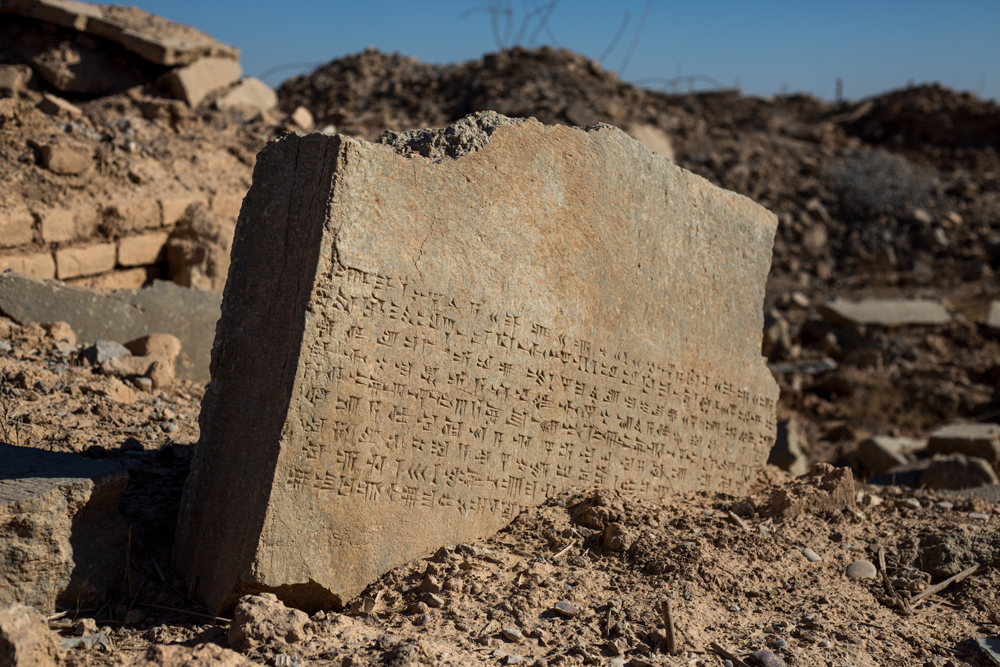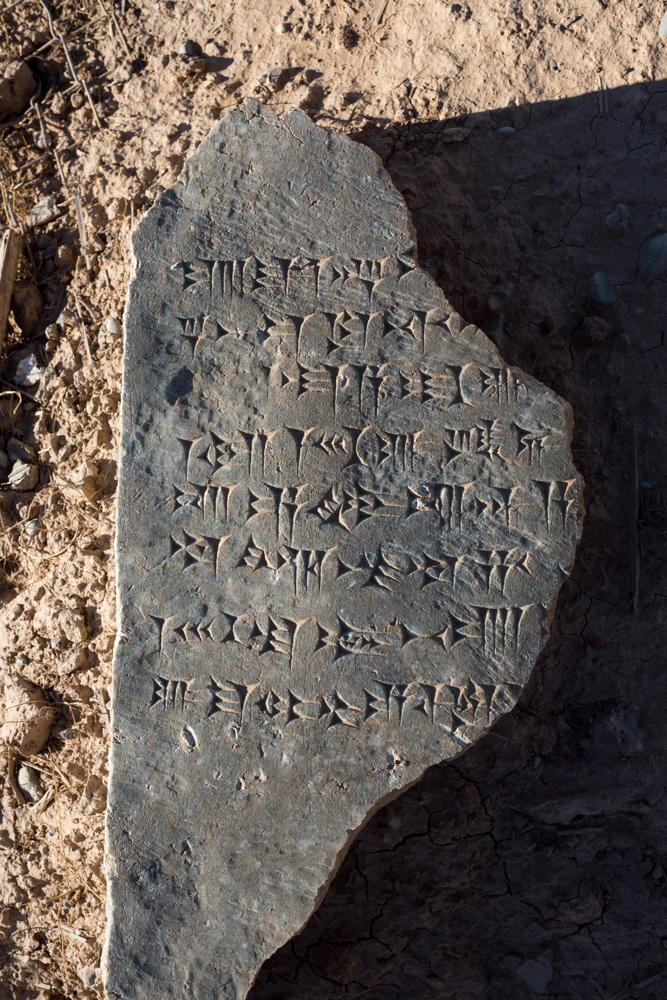Photos: Ancient Inscriptions Tell of Assyrian King Ashurnasirpal II
Piles of history

A number of artifacts with inscriptions have survived the destruction of the ancient Assyrian city of Nimrud. Live Science showed photographs of some of the inscriptions to scholars who were able to identify what they say. In this high res image a statue, with carved remains of legs, can be seen sticking out of a pile of destroyed artifacts.
The inscription beside the legs tells the story of how the Assyrian King Ashurnasirpal II (reign 883–859 B.C.) founded a monkey colony at Nimrud. The king received female monkeys as tribute from lands near the Mediterranean coast and bred them with male monkeys that he also obtained (or already had) to found the colony. The inscription says that "herds of them in great numbers" lived at Nimrud.
[Read the full story on the surviving ancient inscriptions.]
A world unknown

This inscription describes who Ashurnasirpal II was and who his father and grandfather were. It also describes the lands he conquered and the palace he built at Nimrud. The text on this inscription is one of at least eight known examples of this inscription from the ancient world. A translation was published in 1991 by Albert Kirk Grayson. "I built this palace for the eternal admiration of rulers and princes (and) decorated it in a splendid fashion," part of the inscription says (translation by Albert Kirk Grayson). Sadly most of the palace was destroyed by ISIL.
Surviving modern war

This work of art was actually restored sometime before the war and somehow survived the destruction of Nimrud by ISIL. It shows a winged genie, a common motif in ancient Assyrian art. The inscription on the work of art records that it is the property of Ashurnasirpal II.
[Read the full story on the surviving ancient inscriptions.]
Ancient copyright

Another surviving work of art, albeit badly damaged. Iraq archaeologists have arrived on site and hope to clean and put back together the surviving art. In ancient times this inscription was also copied multiple times. It says that the artwork is "(Property of) the palace of Ashurnasirpal, vice-regent of Assur, chosen of the gods Enlil and Ninurta, beloved of the gods Anu and Dagan, destructive weapon of the great gods, strong king, king of the universe, king of Assyria…" (translation by Albert Kirk Grayson)
Get the world’s most fascinating discoveries delivered straight to your inbox.
Old and beautiful

This tablet also survived the destruction of Nimrud. Grant Frame, a professor of Near Eastern Languages & Civilizations at the University of Pennsylvania, notes that in ancient times it was also copied down multiple times. "After the name and titles of the king, it summarizes his conquests and then records the building and decoration of a palace at Nimrud," Frame said.
Damaged but survived

While ISIL's destruction spree at Nimrud was horrible a number of artifacts still remain. If you look closely at the bottom right portion of this picture you can see another inscription that survived the onslaught. As archaeologists conserve, record and photograph the surviving artifacts more information on what survived will become available.
[Read the full story on the surviving ancient inscriptions.]

Owen Jarus is a regular contributor to Live Science who writes about archaeology and humans' past. He has also written for The Independent (UK), The Canadian Press (CP) and The Associated Press (AP), among others. Owen has a bachelor of arts degree from the University of Toronto and a journalism degree from Ryerson University.


